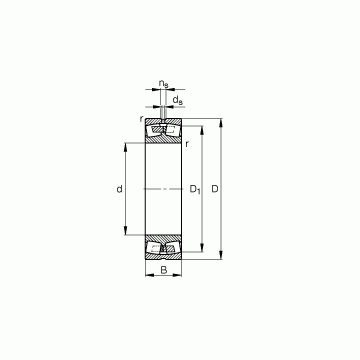Home> Company News> Kawasaki Pumps For Low-Cost Hydraulics
- AddressNo.7001. XUEYUAN ROAD, NANSHAN DISTRICT,SHENZHEN,CHINA
- Factory AddressNo.7001. XUEYUAN ROAD, NANSHAN DISTRICT,SHENZHEN,CHINA
- Worktime9:00-18:00
- Phone(Working Time)0531-85064681
- Phone(Nonworking Time)0531-85064680
- Fax0531-85064680
Hydraulic pumps play a crucial role in the operation of various industrial and commercial equipment, from heavy machinery to simple lifting systems. Among the various hydraulic pumps available in the market, Kawasaki pumps stand out for their cost-effectiveness and reliability. These pumps are designed to provide a durable and efficient solution for low to medium-pressure hydraulic applications. In this guide, we will discuss the features, benefits, and applications of Kawasaki pumps in the hydraulic industry, providing you with valuable information to help you choose the right hydraulic pump for your needs.
Types of Kawasaki Pumps
Kawasaki is a leading manufacturer of hydraulic pumps that are widely used in various industries, including construction, mining, agriculture, and manufacturing. Their range of pumps includes axial piston pumps, radial piston pumps, and gear pumps, each designed for specific applications.
Axial piston pumps are the most commonly used type of Kawasaki pump, offering high efficiency and durability. These pumps feature a compact design and a high-pressure capability, making them suitable for high-pressure applications. They are ideal for use in excavators, bulldozers, and other heavy equipment that require a reliable and efficient hydraulic system.
Radial piston pumps are designed to offer smooth operation and low noise levels. They are suitable for low to medium pressure applications and are ideal for use in equipment such as skid steers, loaders, and dump trucks. The pumps are built to withstand heavy-duty applications and offer a long service life.
Gear pumps are the most basic type of Kawasaki pump and are suitable for low-pressure applications. They are commonly used in hydraulic power packs, small machinery, and industrial equipment. Gear pumps offer a simple, cost-effective solution for low-pressure hydraulic applications.
Each type of Kawasaki pump has its unique features and benefits, making them suitable for different hydraulic applications. By understanding the types of Kawasaki pumps available and their specific applications, you can choose the right pump for your hydraulic system and achieve optimal performance.

Features and Benefits of Kawasaki Pumps
Kawasaki pumps are known for their exceptional features and benefits. One of the significant advantages of Kawasaki pumps is their high efficiency and reliability, making them suitable for demanding hydraulic applications. The pumps are built to withstand high-pressure and heavy-duty applications, ensuring long service life.
The compact size of Kawasaki pumps is another advantage. These pumps offer a compact size, which reduces the overall weight and size of the hydraulic system. The smaller size makes the pumps ideal for applications where space is limited.
Kawasaki pumps also offer low noise levels, making them suitable for applications where noise reduction is important. The low noise levels are particularly important in applications where the pump is located near the operator or in environments where noise pollution is a concern.
Another advantage of Kawasaki pumps is their versatility. The pumps are available in different types, including axial piston pumps, radial piston pumps, and gear pumps, making them suitable for various hydraulic applications. For instance, axial piston pumps are ideal for high-pressure applications, while radial piston pumps are suitable for low to medium pressure applications. Gear pumps, on the other hand, are ideal for low-pressure applications and offer a simple, cost-effective solution.
Finally, Kawasaki pumps offer excellent value for money. The pumps are cost-effective, making them ideal for low-cost hydraulic applications. Kawasaki pumps are designed to deliver excellent performance and reliability at a lower cost than some of their competitors in the market.
Overall, Kawasaki pumps are known for their exceptional features and benefits, making them an excellent choice for hydraulic applications that require low to medium pressure.
Applications of Kawasaki Pumps
Kawasaki pumps are widely used in various hydraulic applications, offering a reliable and efficient solution. These pumps are designed with various features and benefits, making them suitable for different applications in the hydraulic industry.
One of the primary benefits of Kawasaki pumps is their ability to withstand high pressure and heavy-duty applications, ensuring long service life. They are built with high-quality materials and are designed to operate efficiently in demanding environments.
Another significant feature of Kawasaki pumps is their compact size, reducing the overall weight and size of the hydraulic system. This makes them ideal for applications where space is limited, such as small machines.
In addition to their durability and compact design, Kawasaki pumps offer low noise levels, making them ideal for applications where noise reduction is important. This feature is particularly useful in industries such as construction and manufacturing, where noise pollution can be a significant concern.
Kawasaki pumps also offer high efficiency, providing reliable performance in various hydraulic applications. The pumps are designed with advanced technology, allowing them to operate efficiently and effectively.
Furthermore, Kawasaki pumps are easy to install and maintain, making them a popular choice for many hydraulic systems. They come with detailed instructions and guidelines for installation, making the process simple and straightforward.
Overall, Kawasaki pumps are a reliable and cost-effective solution for low to medium pressure hydraulic applications. With their range of models available, these pumps are suitable for various hydraulic systems used in small machines.
Maintenance of Kawasaki Pumps
Regular maintenance is essential to ensure the long service life and reliable operation of Kawasaki pumps. It is important to follow the manufacturer's maintenance schedule and guidelines to ensure that the pump is properly maintained. Regular maintenance includes cleaning and inspecting the pump, checking for leaks, and replacing worn-out parts.
One important aspect of maintaining Kawasaki pumps is to regularly check the oil levels and replace the oil when necessary. Over time, the oil in the pump can become contaminated with dirt, debris, and moisture, which can cause the pump to operate less efficiently and even cause damage to the system.
It is recommended to change the oil in Kawasaki pumps every 500 hours of operation or as recommended by the manufacturer. Before changing the oil, it is important to warm up the pump to operating temperature and shut off the pump. Allow the pump to cool down before removing the oil plug to avoid getting burned by hot oil.
After removing the oil plug, drain the oil into a suitable container and dispose of it properly. Once the oil has been drained, replace the oil plug and add new oil to the pump. It is important to use the correct type of oil as recommended by the manufacturer to ensure proper lubrication and protection of the pump.
In addition to changing the oil, it is important to regularly inspect the pump for leaks and damage. Check all hoses and connections for signs of wear or damage and replace any parts that are worn or damaged. Inspect the pump for signs of leaks and repair any leaks immediately to prevent further damage to the system.
Overall, regular maintenance is crucial to ensure the long service life and reliable operation of Kawasaki pumps. By following the manufacturer's maintenance schedule and guidelines and performing regular checks and inspections, you can keep your Kawasaki pump operating efficiently and prevent costly downtime and repairs.

Kawasaki pumps are an ideal solution for low to medium pressure hydraulic applications, offering high efficiency and reliability at a low cost. However, regular maintenance is essential to ensure that the pumps operate efficiently and have a long service life.
To maintain Kawasaki pumps, it is recommended to follow the manufacturer's maintenance schedule and guidelines. This includes regular cleaning and inspection of the pump, checking for leaks, and replacing worn-out parts. Regular oil changes are also essential to keep the pump operating efficiently and prevent damage to the system.
Cleaning the pump involves removing dirt, dust, and other debris from the pump's exterior and interior components. A soft cloth or brush can be used to remove dirt and debris from the pump's exterior, while a high-pressure washer can be used to clean the interior of the pump.
Inspecting the pump is an essential part of maintenance, as it allows you to identify potential issues before they become more significant problems. Check the pump for signs of wear, leaks, or damage. Ensure that all connections are tight and secure.
Leaks can be a common problem with hydraulic pumps, and it's essential to address them as soon as they are detected. If you notice any leaks, determine the source of the leak and repair it promptly. Leaks can cause damage to the hydraulic system and reduce the pump's efficiency.
Replacing worn-out parts is essential to ensure that the pump operates efficiently and safely. Regularly inspect all components, including hoses, seals, and fittings, and replace any worn-out parts promptly. Failure to replace worn-out parts can lead to system failure and costly repairs.
Regular oil changes are essential to ensure that the pump operates efficiently and prevent damage to the system. The oil should be changed according to the manufacturer's recommended schedule, or more frequently if the pump is used in harsh conditions. When changing the oil, be sure to use the recommended type and viscosity of oil.
In conclusion, regular maintenance is essential to ensure that Kawasaki pumps operate efficiently and have a long service life. Follow the manufacturer's maintenance schedule and guidelines, and address any issues promptly to prevent more significant problems from developing. With proper maintenance, Kawasaki pumps offer a reliable and cost-effective solution for low to medium pressure hydraulic applications.


 232/500 KCW33+H32/500 SKF Spherical Roller Bearings
232/500 KCW33+H32/500 SKF Spherical Roller Bearings 23128-E1A-M FAG Spherical Roller Bearings
23128-E1A-M FAG Spherical Roller Bearings